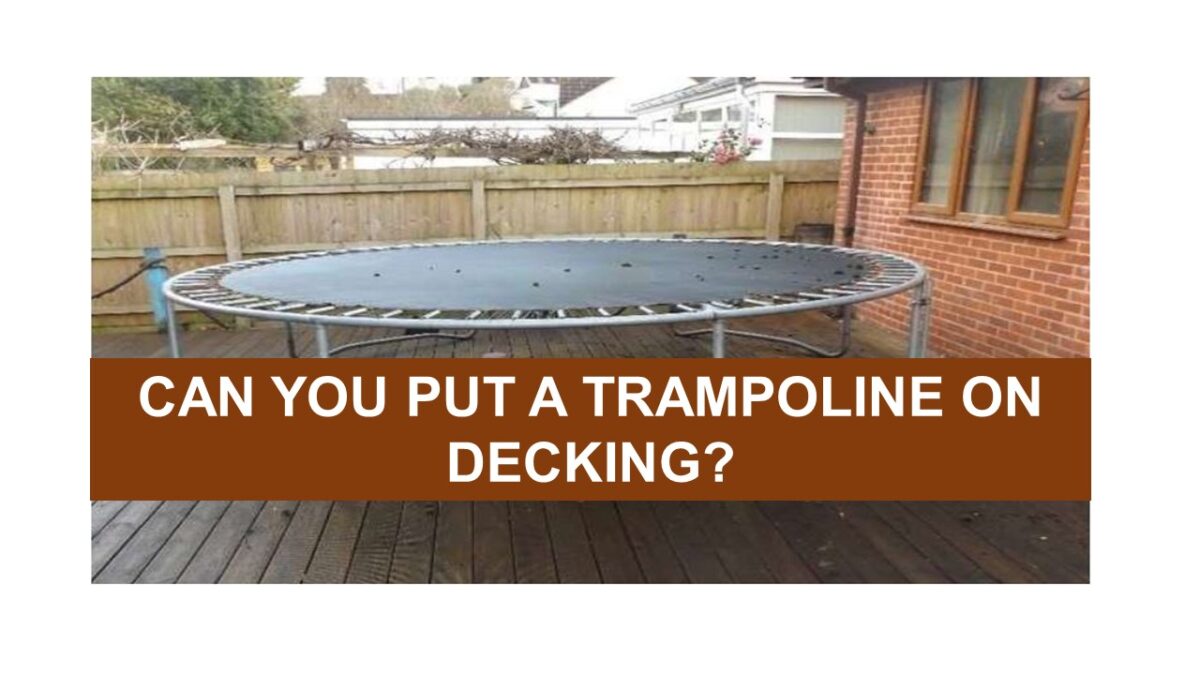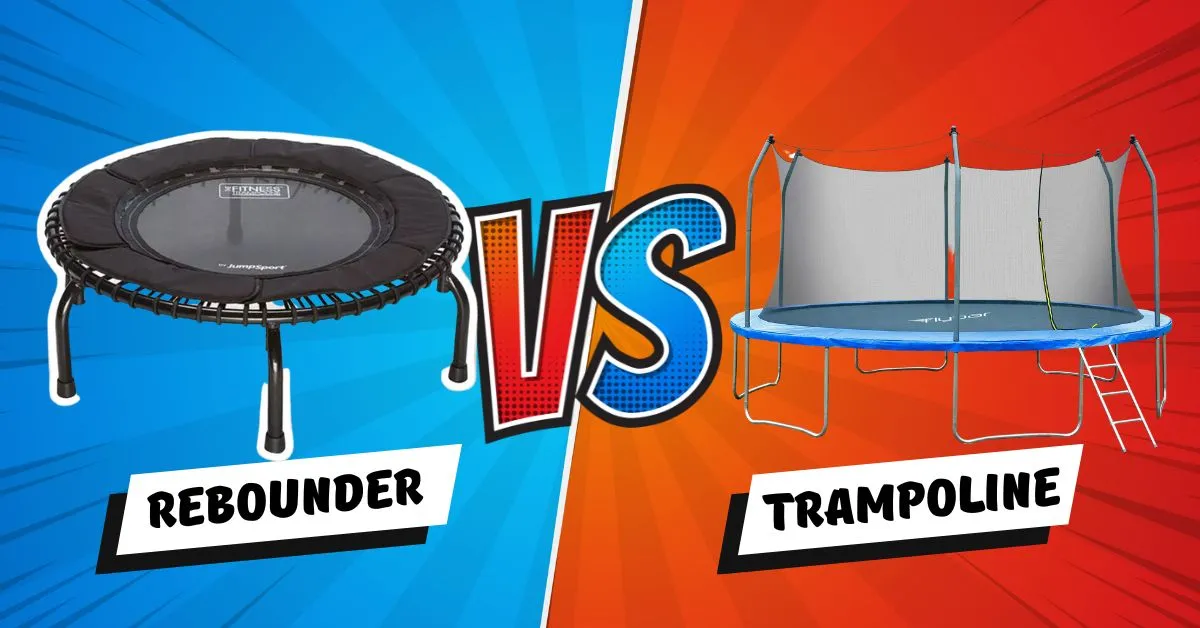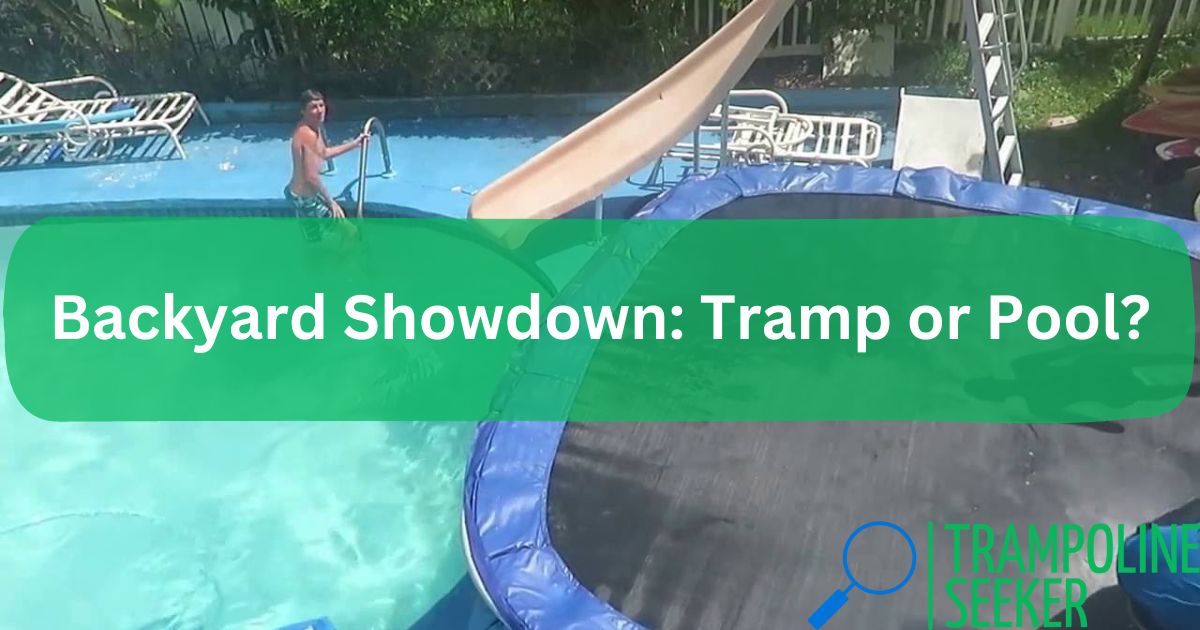As a DIY enthusiast and trampoline owner, I was eager to find ways to restore my faded, weathered trampoline to its former glory. After much research and trial-and-error, I’ve mastered the art of painting a trampoline properly.
In short, to paint a trampoline, start by cleaning the frame, springs, and mat thoroughly. Sand any rusty spots and use painter’s tape to mask off areas you don’t want painted. Spray paint the frame using exterior-grade enamel paint in slow, steady strokes. For the springs, apply flexible enamel paint in thin coats. Use exterior acrylic paint and a roller to paint the mat in sections.
Allow ample drying time before reassembling. With the right prep and painting technique, you can restore a faded trampoline to look vibrant and new.
In this comprehensive guide, I’ll walk you through my hard-earned expertise on how to paint a trampoline like a pro, from start to finish. Let’s dive in!
How to Paint a Trampoline Easily – Step by Step

Step 1: Gather the Right Painting Supplies and Tools
Before starting any DIY painting project, it’s crucial to gather all the necessary supplies and tools. Improper or low-quality equipment can make the painting job much harder and deliver unsatisfactory results. Based on my experience painting trampolines, here are the must-have items you’ll need:
Essential Painting Supplies

- Rust-resistant spray paint – Protects the trampoline frame and springs from rust damage. Opt for a high-quality paint specifically formulated for outdoor metal surfaces.
- Paintbrush – For painting springs and doing touch-ups on the frame. Get a brush with soft, synthetic bristles.
- Paint roller – Makes quick work of painting the trampoline mat. Choose a roller with a smooth finish.
- Painter’s tape – Masks off areas you don’t want painted. Use high-quality tape that won’t peel paint off surfaces.
- Drop cloths – Protect surrounding areas from paint overspray and drips. Canvas drop cloths work best.
- Primer – Helps paint adhere properly to trampoline surfaces. Pick primer suited for metal and fabrics.
Helpful Painting Tools
- Wire brush – Removes loose paint and rust from trampoline frame and springs.
- Sandpaper – Creates a rough surface profile to improve paint adhesion. Go for fine grit.
- Tarp – Further safeguards nearby objects from paint spills and overspray.
- Paint tray – Holds paint so the roller can easily coat the trampoline mat. Use a metal tray.
- Rags & paint thinner – For cleaning up spills and drips. Rags should be lint-free.
- Masking paper & plastic – Alternative to painter’s tape for covering logos, labels, etc.
- Ladder – Provides safe access to paint hard-to-reach areas on a tall trampoline.
With the right gear, you’ll be fully equipped to paint your trampoline like a pro. Avoid taking shortcuts here or you may end up with a sloppy, unsatisfactory paint job.
Step 2: Prep the Trampoline for Painting
Proper prep work is the key to achieving great results when painting a trampoline. Rushing into painting without preparing the surface will likely lead to problems like poor paint adhesion, corrosion down the road, and an uneven finish. Here are the crucial steps I follow to prep my trampolines for painting:
Thoroughly Clean the Entire Trampoline
Before anything else, every square inch of the trampoline must be cleaned. Built-up dirt, grime, and debris prevent paint from properly adhering. Use a mild detergent and a soft brush to gently scrub the frame, springs, and mat. For stubborn stains, apply a cleaning solution specifically formulated for trampolines. Always rinse thoroughly after cleaning.
Remove All Rust and Loose Paint
Inspect the trampoline closely for any rust or peeling paint, especially on the frame and springs. Use a wire brush and sandpaper to strip all rust and loose paint down to the bare metal. This prevents continuing corrosion under the new paint.
Sand All Painted Surfaces Lightly
Once clean and dry, use fine-grit sandpaper to scuff up paintable surfaces. This roughs up the trampolines frame, springs, and mat so the new paint can grab on better. Don’t sand aggressively enough to remove good paint.
Mask Off Areas Not Being Painted
Use painter’s tape, masking paper, or plastic sheeting to cover any areas you don’t want painted. This includes the trampoline’s frame pads, logos, warning labels, and springs if not painting them. Take your time on the masking to prevent a messy overspray.
Work in a Dust-Free Area
Painting outdoors is ideal, but if working indoors, be sure the area is as dust-free as possible. Dust particles can embed into the paint finish and make the coating look gritty and uneven.
With proper prep work, you’ve set the stage for the paint to adhere tightly and provide long-lasting protection against the elements. Never skip these vital steps!
Step 3: How to Paint a Trampoline Frame?
The frame is the foundation of your trampoline, so painting it properly ensures the whole structure remains protected. Follow my DIY tips below for flawlessly painting a trampoline frame:
Choose a Durable Frame Paint
For lasting results, use exterior-grade spray paint formulated especially for metal surfaces. The paint should resist rust, fading, chips, and peeling even when exposed to harsh weather conditions. An enamel paint provides the most heavy-duty performance.
Shake the Paint Can Vigorously
Before starting to paint, thoroughly shake the spray paint can for at least one minute. This mixes the paint pigments and ensures uniform flow and coverage as you spray.
Apply Paint from 6 to 8 Inches Away
Hold the spray can about 6 to 8 inches away from the frame as you paint. At this short distance, the paint can wrap around and coat all sides of the frame tubing or railings for full coverage.
Use Slow, Steady Strokes
Aim for slow, steady strokes with the spray can instead of fast, erratic movements. Patient spraying prevents drips and results in a smoother, more consistent paint finish.
Apply Two Coats of Paint
I highly recommend applying two coats of paint to the frame for enhanced protection and durability. Wait for the first coat to dry fully before adding the second. The double layering resists corrosion, scratches, and peeling better.
Paint the Frame’s Underside
For total protection, flip the trampoline over or tilt it to paint the frame’s underside too. Use the same spraying techniques to coat the bottom evenly.
Allow Ample Drying Time
Let the paint cure fully before reassembling the trampoline. Drying time varies based on humidity, temperature, ventilation, and number of paint coats applied. Play it safe and let it cure for 48 hours before handling.
Inspect Closely and Do Touch-Ups
Once the paint has dried, scrutinize the frame for any thin spots or bare metal still exposed. Use a paintbrush to manually touch-up these areas for complete coverage.
By following these tips as I have outlined, you can achieve professional-looking paint results on your trampoline frame. Just take it slow and steady!
Step 4: Painting Trampoline Springs the Right Way
The springs on a trampoline see constant tension and flexing as the mat bounces up and down. That intense mechanical motion can gradually grind away paint and expose the bare metal underneath to corrosion. Properly painting your trampoline’s springs preserves their structural integrity and performance. Here’s my proven process:
Choose a Flexible, Protective Paint
On springs that experience major flexing, use paint that remains flexible once dry instead of becoming brittle. Enamel paints are a good choice as they resist cracking as the springs expand and contract during use.
Remove Rust First
Before painting, scrub the springs with a wire brush to remove any dirt, debris, rust, or loose paint. Get them down to clean metal to ensure the new paint adheres properly.
Apply a Primer Coat First
I recommend first spraying a coat of metal primer formulated for outdoor use. The primer fills in small scratches and creates a uniform surface profile for the paint to bond tightly to the springs.
Paint Springs with Thin, Even Coats
When spraying the paint, apply thin passes back and forth over the length of each spring instead of trying to coat in one pass. The light passes prevent drips and runs.
Allow Proper Drying Time
Springs require longer drying times than frames due to their high flex ratio. Let the paint cure per the manufacturer’s instructions before using the trampoline again. Insufficient drying can make paint crack and peel off springs.
Avoid Painting Springs Entirely
Never paint an entire spring from end to end. This negatively affects elasticity and performance. Only paint the exposed sections between the hooks at each end.
With the right paint and careful application practice, you can get a durable painted finish on your springs that withstands constant movement and impact. Just remember to prep properly and allow ample curing time.
Step 5: How to Paint a Trampoline Mat
Painting the mat is the final step in restoring a faded, weathered trampoline. Follow my DIY trampoline mat painting tips for best results:
Select Exterior-Grade Acrylic Paint
For long-lasting performance on fabric mats, use high-quality acrylic latex paint designed for outdoor use on furniture fabrics and canvas. Avoid cheaper interior paints not made for exterior wear.
Tape Off Logos, Warnings, Etc.
Use painter’s tape to mask off the manufacturer’s logo, safety warnings, or any other areas you want to keep their original color. Removing tape immediately after painting prevents peeling.
Apply Paint with Roller or Brush
I prefer using a paint roller for quick, even coverage on large mats. Work methodically from the center outward. For smaller mats, carefully brushing works fine. Maintain light pressure.
Apply At Least Two Thin Coats
Thin coats prevent the fabric from becoming too saturated. Wait until the first coat fully dries before adding the second for best results. More coats can be added for very faded mats.
Paint the Mat’s Top and Underside
Don’t forget to paint the underside of the mat too! This protects the whole surface from UV damage. Use the same applicator and painting technique for even coverage.
Let Paint Dry Completely Before Using
It’s crucial to allow the paint at least 24 hours of drying time before re-assembling the trampoline. Insufficient drying leads to tacky paint that picks up dirt and debris when bouncing.
With the proper materials and some practice, painting a trampoline mat is a straightforward process. Just remember to work methodically and let the paint cure fully. Your mat will look vibrant and new again!
Final Steps for a Flawless Painted Trampoline
Once you’ve painted the frame, springs, and mat, there are a few final steps to complete for a durable, professional-quality paint job:
- Let paint cure 48-72 hours before reassembling trampoline
- Apply clear coat for added UV protection
- Re-assemble trampoline properly per manufacturer’s instructions
- Clean painting tools and spray tips thoroughly to prevent clogging
- Store tools properly to avoid deformation of bristles, rollers, etc.
- Inspect for any thin spots needing touch-up
- Dispose of rags, drop cloths, and paint cans properly
Taking the extra time on these finishing touches helps the paint last longer and provides a flawless look you’ll enjoy for years. Maintain your painted trampoline properly, and it will stay vibrant and protected from the elements.
FAQs About Painting a Trampoline
Below are answers to some of the most common questions I get asked about painting trampolines:
| Question | Answer |
|---|---|
| What type of paint should be used? | Use high-quality exterior-grade spray paints and primers formulated especially for metal and fabric surfaces. Enamel and acrylic latex paints work best. |
| How long does paint take to dry? | Drying times vary based on temperature, humidity, ventilation, and coats applied. Allow at least 24 hours for frame and 48 hours for mat. |
| Can you paint over rust? | No. Rust must be removed before painting or it will continue spreading under the paint. Use a wire brush and sandpaper to remove rust down to bare metal. |
| Should I paint the mat and frame different colors? | Yes, contrasting colors help the mat stand out from the frame. But uniform coloring can also look great if done right. |
| Is it okay to paint warning labels and logos? | Avoid painting over warning labels, logos, or manufacturer stamps if possible. If unavoidable, reapply new labels later for safety. |
Final Words
Let my years of experience painting trampolines successfully guide you through this process. Just remember—proper preparation is the key to achieving professional-looking results. With these tips, you can restore your trampoline affordably with a vibrant new paint job. Your only dilemma will be choosing a color that pops!
Articles You May Like to Read:













